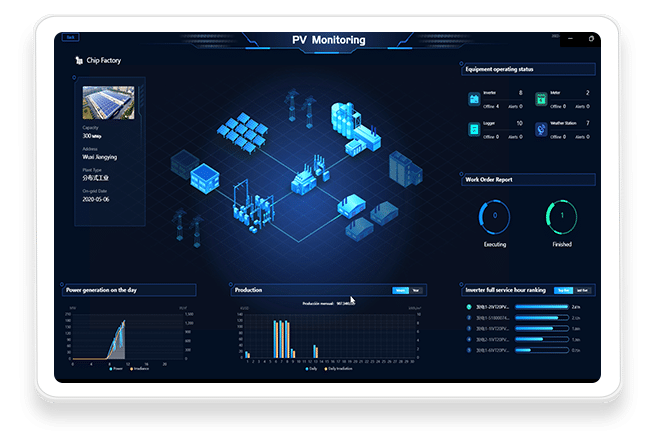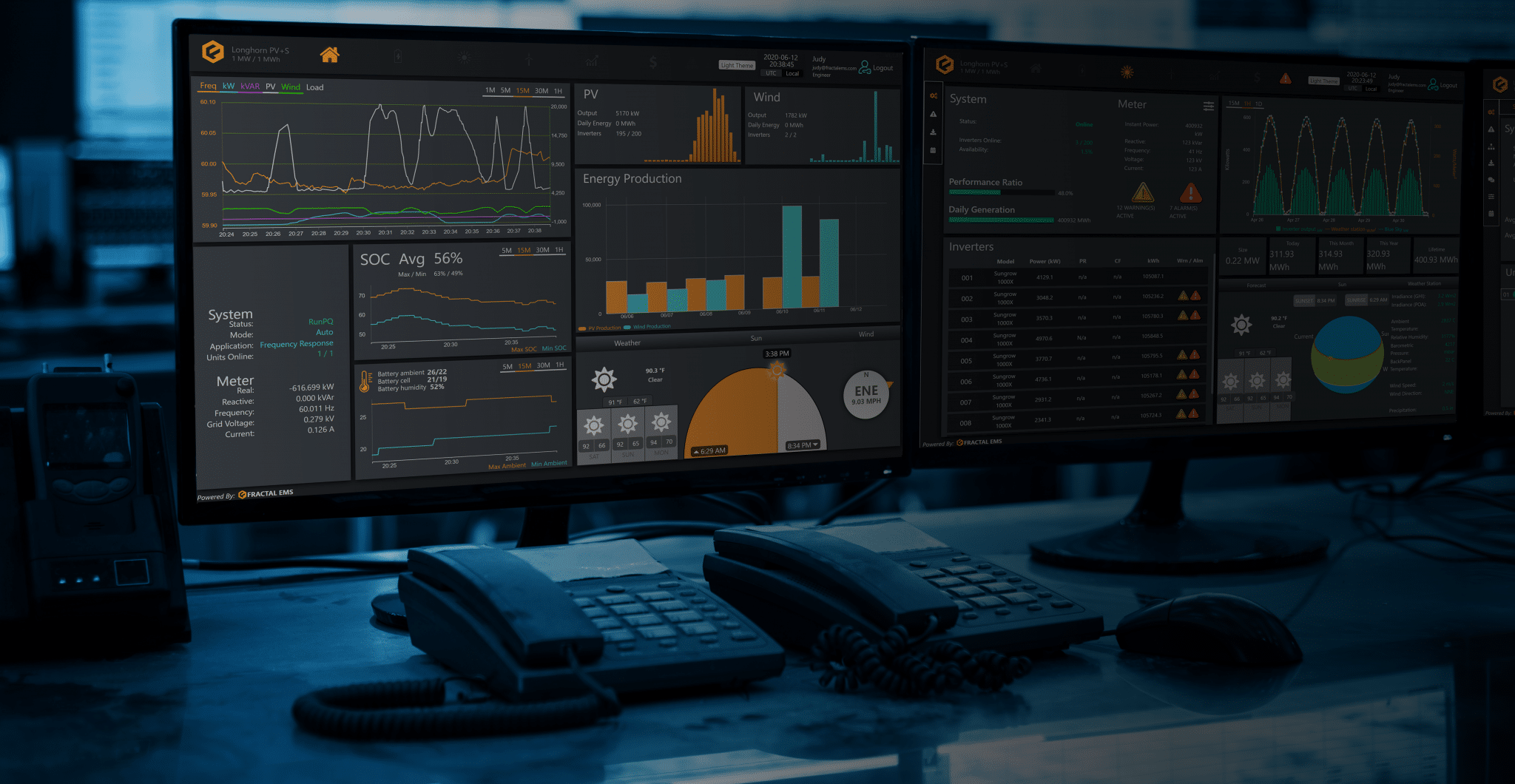In a world striving for sustainability and efficiency, Energy Management Systems (EMS) have emerged as a game-changer. By providing intelligent solutions that optimize energy generation, storage, and consumption, EMS enables homeowners, businesses, and communities to take control of their energy usage. In this article, we’ll explore the key benefits of EMS and explain how these systems can revolutionize the way we approach energy management.
What is an Energy Management System (EMS)?
An Energy Management System is a combination of hardware and software that monitors, controls, and optimizes energy consumption in homes, commercial buildings, and industrial facilities. By collecting and analyzing real-time data, an EMS can provide actionable insights and automate various energy-related processes, ultimately resulting in energy savings, reduced costs, and a more sustainable energy profile.

Key Components of EMS
- Sensors and meters: These devices measure and monitor energy consumption, generation, and storage in real-time.
- Control units: These components manage energy-related equipment, such as HVAC systems, lighting, and energy storage devices.
- Software: The software analyzes the data collected by sensors and meters, offering insights and recommendations for energy optimization.
Benefits of Energy Management Systems
1. Energy Savings
One of the primary goals of an EMS is to reduce energy consumption. By providing real-time information on energy usage and identifying inefficiencies, an EMS can help homeowners and facility managers implement targeted energy-saving measures. For example, an EMS can help optimize HVAC systems and lighting controls, resulting in reduced energy waste.
2. Cost Reduction
By reducing energy consumption, an EMS can significantly lower energy bills. Additionally, EMS can help users take advantage of demand response management, adjusting energy consumption during peak demand times to avoid higher electricity rates.
3. Enhanced Sustainability
By promoting energy efficiency and the integration of renewable energy sources, such as solar and wind power, EMS helps reduce the reliance on fossil fuels and decrease greenhouse gas emissions. This, in turn, contributes to a more sustainable and environmentally friendly energy profile.
4. Improved Energy Resilience
An EMS can enhance energy resilience by integrating and managing distributed energy resources (DERs) such as solar panels, wind turbines, and energy storage systems. In case of a grid outage, a well-designed EMS can maintain power supply by managing and prioritizing available resources.
5. Customizable and Scalable Solutions
EMS can be tailored to meet the specific needs of homes, businesses, and communities, providing customizable solutions that grow and adapt as energy requirements evolve.
EMS Applications
Home Energy Management Systems (HEMS)
A Home Energy Management System (HEMS) allows homeowners to monitor and control their energy consumption and production. HEMS often includes smart thermostats, lighting controls, and the ability to manage solar panels and energy storage devices.
Building Energy Management Systems (BEMS)
A Building Energy Management System (BEMS) is designed for commercial and industrial buildings, offering advanced energy monitoring and control features. BEMS can manage complex HVAC systems, lighting, and other energy-intensive equipment, resulting in significant energy and cost savings.
Microgrid Energy Management Systems
EMS can coordinate and optimize the operation of various distributed energy resources, including solar panels, wind turbines, energy storage devices, and backup generators. By effectively managing these resources, a microgrid EMS can ensure a stable and reliable power supply, even in remote or isolated areas.
Implementing an EMS: Key Considerations
Before implementing an EMS, it is essential to consider the following factors:
- Energy goals: Clearly define your energy management objectives, such as reducing energy consumption, lowering costs, or increasing sustainability.
- System compatibility: Ensure that the EMS can integrate with your existing energy infrastructure, such as solar panels, energy storage devices, and building management systems.
- Scalability: Choose an EMS that can adapt to your future energy needs, allowing for seamless integration of new technologies and features.
Conclusion
Energy Management Systems (EMS) are revolutionizing the way we approach energy consumption and generation. By providing intelligent, real-time insights and control, EMS empowers individuals, businesses, and communities to optimize their energy usage, reduce costs, and contribute to a more sustainable future.
Frequently Asked Questions
Q: What is the difference between a Home Energy Management System (HEMS) and a Building Energy Management System (BEMS)?
A: A HEMS is designed for residential use, helping homeowners monitor and control their energy consumption and production. A BEMS, on the other hand, is intended for commercial and industrial buildings, providing more advanced energy monitoring and control features for complex systems.
Q: Can an EMS integrate with renewable energy sources?
A: Yes, an EMS can integrate with various renewable energy sources, such as solar panels and wind turbines, to optimize energy production and consumption.
Q: How does an EMS help reduce energy costs?
A: An EMS helps reduce energy costs by identifying inefficiencies, optimizing energy-consuming processes, and adjusting energy consumption during peak demand times to avoid higher electricity rates.
Q: What are the main components of an Energy Management System?
A: The main components of an EMS include sensors and meters, control units, and software. These components work together to monitor, control, and optimize energy consumption.
Q: Can an EMS improve energy resilience in remote or isolated areas?
A: Yes, an EMS can enhance energy resilience in remote or isolated areas by effectively managing distributed energy resources, such as solar panels, wind turbines, and energy storage devices, ensuring a stable and reliable power supply.
Q: What is the role of demand response management in an EMS?
A: Demand response management is a crucial aspect of an EMS, which helps balance energy supply and demand during peak times. By adjusting energy consumption patterns in response to real-time grid conditions, demand response management helps reduce the strain on the grid, stabilize electricity prices, and improve overall grid reliability.
Q: How can an EMS help businesses achieve sustainability goals?
A: An EMS helps businesses achieve their sustainability goals by monitoring and optimizing energy consumption, reducing energy waste, and facilitating the integration of renewable energy sources. By using an EMS, businesses can significantly lower their carbon footprint and contribute to a more sustainable future.
Q: Can an EMS be integrated with electric vehicle (EV) charging infrastructure?
A: Yes, an EMS can be integrated with EV charging infrastructure to optimize energy consumption and charging schedules. By intelligently managing EV charging, an EMS can ensure that vehicles are charged during off-peak hours or when renewable energy sources are available, reducing energy costs and environmental impact.
Q: Is an EMS suitable for residential, commercial, and industrial applications?
A: An EMS can be tailored to suit various applications, including residential, commercial, and industrial settings. Home Energy Management Systems (HEMS) are designed for residential use, while Building Energy Management Systems (BEMS) cater to commercial and industrial buildings with more complex energy needs.
Q: What types of energy-saving strategies can an EMS employ?
A: An EMS can employ various energy-saving strategies, such as adjusting temperature setpoints, optimizing lighting schedules, managing HVAC systems, and controlling the operation of energy-intensive equipment. These strategies help reduce energy consumption and costs while maintaining occupant comfort and productivity.
Q: How does an EMS help identify energy inefficiencies?
A: An EMS uses sensors, meters, and advanced software algorithms to monitor energy consumption patterns and identify inefficiencies. By analyzing energy usage data, an EMS can pinpoint areas of waste, recommend energy-saving measures, and help users optimize their energy consumption.
Q: Can an EMS be integrated with a microgrid system?
A: Yes, an EMS can be integrated with a microgrid system to manage and optimize the operation of various distributed energy resources, such as solar panels, wind turbines, energy storage devices, and backup generators. This integration ensures a stable and reliable power supply in remote or isolated areas.
A: An EMS uses historical energy consumption data and advanced predictive algorithms to forecast energy demand. By accurately predicting future energy needs, an EMS can help users optimize energy usage, plan for peak demand periods, and make informed decisions about energy procurement and infrastructure investments.
Q: How can an EMS help reduce energy costs?
A: An EMS helps reduce energy costs by identifying inefficiencies, optimizing energy consumption patterns, and implementing energy-saving strategies. By providing real-time data and actionable insights, an EMS allows users to make informed decisions about energy use, which can lead to significant cost savings.
Q: Can an EMS integrate with renewable energy sources like solar and wind?
A: Yes, an EMS can integrate with renewable energy sources such as solar and wind, helping users manage and optimize the generation, storage, and consumption of clean energy. This integration can result in reduced reliance on non-renewable energy sources and lower greenhouse gas emissions.
Q: Is an EMS compatible with different types of energy storage systems?
A: An EMS is compatible with various energy storage systems, including lithium-ion batteries, flow batteries, and pumped hydro storage. By integrating with energy storage devices, an EMS can optimize the charging and discharging cycles, extending the lifespan of the storage system and improving overall system efficiency.
Q: What are the main components of an EMS?
A: An EMS typically consists of sensors and meters to collect real-time energy consumption data, a central processing unit for data analysis and decision-making, and a user interface to visualize energy usage, receive alerts, and control the system. Additionally, an EMS can include communication modules for integration with other building systems and remote monitoring capabilities.
Q: How does an EMS contribute to grid stability?
A: An EMS contributes to grid stability by managing energy demand and supply, reducing peak load stress on the grid, and enabling the integration of renewable energy sources. By optimizing energy consumption and coordinating distributed energy resources, an EMS helps maintain grid reliability and supports the transition to a more sustainable energy future.
Q: Can an EMS help in meeting energy efficiency targets and regulations?
A: Yes, an EMS can help users meet energy efficiency targets and comply with regulations by providing insights into energy consumption patterns, identifying inefficiencies, and suggesting energy-saving measures. By implementing the recommended strategies, users can reduce their energy consumption and achieve compliance with local, regional, or national energy efficiency standards.
Q: How does an EMS support demand response management?
A: An EMS supports demand response management by monitoring and controlling energy consumption in response to real-time grid conditions, price signals, or incentive programs. By adjusting energy use during peak demand periods or shifting consumption to off-peak times, an EMS helps users participate in demand response programs and take advantage of associated cost savings and incentives.
Q: Can an EMS be customized to suit specific industry needs?
A: Yes, an EMS can be customized to suit the specific needs of various industries, such as manufacturing, commercial buildings, or residential properties. Customization can include tailored energy management strategies, industry-specific data analysis, and integration with specialized equipment or processes.
Q: What is the role of artificial intelligence (AI) and machine learning in an EMS?
A: AI and machine learning play a crucial role in an EMS by enabling advanced data analysis, predictive modeling, and automated decision-making. These technologies help an EMS to adapt to changing energy conditions, learn from historical data, and continuously improve its performance over time, leading to more accurate insights and better energy management outcomes.
Q: How secure is an EMS?
A: Security is a critical aspect of any EMS, as it involves the collection, processing, and storage of sensitive energy usage data. A well-designed EMS incorporates robust security measures, such as encryption, access controls, and secure communication protocols, to protect the system from unauthorized access, data breaches, and cyberattacks.
Q: Can an EMS help in reducing greenhouse gas emissions?
A: An EMS can significantly contribute to reducing greenhouse gas emissions by optimizing energy consumption, promoting the use of renewable energy sources, and facilitating energy-efficient practices. By minimizing energy waste and encouraging a more sustainable energy mix, an EMS supports global efforts to mitigate climate change and reduce the environmental impact of human activities.


